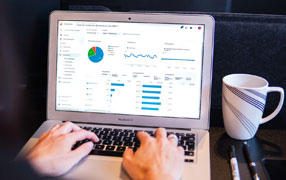.jpg)
Marketing Suite
What are the 5 most effective customer segments and how do I use them?
1. Lead Origin
2. Demographic
3. Warmth
5. Network
What is a customer segment?
Customer segmentation refers to the process by which marketing and sales split a target audience into sectioned groups for easier and more personalised communications. Segments are usually chosen based on identifiable characteristics, interests or traits, and each segment should serve a purpose in order to help a product or service reach a particular target group, achieve a specific sales KPI, or successfully launch a refocus campaign.
It is important to identify which customer segment you’re targeting with a campaign or set of comms before you launch in order to keep all content on brand, relevant, and to maximise your value proposition.
“The sales team owns the sales funnel. But as a B2B marketer, you feed the top of their funnel.”
Doug Kessler
Read on to find out about some of the best ways to segment your target audience to help your campaigns reach the right people and to increase sales.
- By Lead origin
What is Lead Origin?
The lead origin refers to the way a lead will arrive at the beginning of the sales funnel. This can happen in a number of reasons, some of which are:
- Referral
- Marketing campaign
- Website contact sheet
- Newsletter subscription
- Purchase from a sibling company
Why is this a good segment?
An audience segment containing every account from one particular lead origin allows you to understand exactly what about your business is valuable to them, and what drew them to become a lead in the first place. Armed with this information, your marketing and sales communication have a clear focus and target: sell them a product or service they have already shown interest in. This allows you to be confident that a high percentage of these segmented leads will convert and become a sale.
- By demographic
What is demographic?
Most of you reading this will already know what is meant by demographic. In its most basic form, the demographic of an audience member is the personal details they can be grouped by that define different parts of them as a structure of a population: or in this case, audience!
Why is this a good segment?
Demographics can actually be broken down into plenty of sub-demographics that make it a great choice for creating plenty of fun and diverse segments. Here are just some examples:
- Age and gender
- Likes
- Dislikes
- Location
Creating an audience segment using any one of these demographic categories enables marketing and sales to target products and services most relevant to this niche, using the platform that is most relevant to them. This segment type can be highly specific, and so as a result, the campaigns are more highly personalised and likely to grab attention.
.jpg)
- By warmth
What is warmth?
Warmth is a score that is assigned to a potential lead, either manually or automatically, that determines its likelihood to turn into a sale. Warmth scores are usually predicted using data about similar previous leads, level of intent indicated, or its origin.
Why is this a good segment?
Segmenting a group of customers into sub-groups by their warmth score allows your teams to understand how much work is required to convert that particular lead. If, for example, you segment the leads with the highest percentage chance that they will become a revenue-generating account, your teams know that the hard sell is more likely to drive them away and can focus on creating subtle email campaigns to nudge them along the pipeline. On the other hand, segmenting leads that have a lower warmth score give you a simple list of potential sales that will need a bit more “hand-holding” to convert. This includes making an email schedule, planning follow-up calls and bulk-sending incentives.
- By purchase history
What is purchase history?
Purchase history is the most self-explanatory customer segment. Essentially, the audience is segmented according to which products or services they have previously purchased: either from you, a sibling company, or a competitor.
Why is this a good segment?
Segmenting customer groups by purchase history allows sales and marketing to discern similar, related or relevant products/ services to market. Understanding what a target group has already purchased and when their last purchase took place informs a better personalised product recommendation campaign. Send this in bulk to your segment to see higher numbers of sales conversion thanks to increased insight about customer preferences.
.jpg)
- By network
What is network?
Network is easiest to determine if you are using a CRM to keep track of your contacts and accounts. This segment refers to which contact is linked to which others, and by what means. For example, if a company that has bought a particular service from you before is linked by any means (personal connection, location, industry) to a group of other businesses: that is your network.
Why is this a good segment?
Determining network webs in your audience using Contacts and Accounts is a powerful and relatively cost-friendly way of segmenting. By understanding which business is linked to which, you can use this information to create compelling marketing and sales strategies involving reviews and case studies. Networks also help you to “cold target” larger sections of an audience by industry, discern what other companies in that industry find valuable about your offering, and the strategies you had previously used to onboard them.

30 days free trial. No credit card required
 One powerful platform
One powerful platform
 Simple to use
Simple to use
 Comprehensive
Comprehensive



